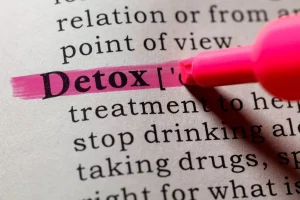
Several aspects of mitochondrial function, including respiratory complex activities and mitochondrial-dependent oxidative damage and apoptosis, are also induced by ethanol 26,100. Myocyte cytoskeletal structure 21, connexin channel communication, and desmosomal contacts are affected by ethanol, causing structural cell instability 105. Ethanol may induce changes in nuclear regulation of transcription with a dose-dependent translocation of NFkB into the nucleus 106. The resulting effect in those multiple sites may be additive and synergistic, increasing the final damage 20,52 (Figure 1). In conclusion, our study is unique in that we identified a downtrend in admissions among patients with AC in over a 13‐year period. Half the admissions occurred for cardiovascular etiologies and in‐hospital mortality among all admissions remained fairly unchanged in the absence of a clinically relevant trend.

Recent Activity
Acetaldehyde is produced at a lower quantity in the heart as compared to the liver, and systemic acetaldehyde does not achieve toxic heart concentrations 77. In addition, acetaldehyde is able to interact with proteins and produce protein-adduct compounds that are highly reactive and may induce additional inflammatory and immunologic heart damage 78. Therefore, because of its multiple actions, acetaldehyde may influence ACM pathogenesis in addition to ethanol effect itself 20,76,77. The first clinical recognition of ACM was performed by Hippocrates in Greece during the 4th century B.C. However, its modern clinical report was delayed until the 19th century, where specific ACM cases were clinically described in Germany and England 1. During the 20th century, the physiopathological basis for ACM was progressively established 6.
Enhancing Healthcare Team Outcomes

However, there is a clear personal susceptibility of this effect that creates a wide variability range and supposes significant inter-individual differences 50,66. In fact, ACM is considered to be the result of dosage and individual predisposition 32. One of the characteristics that makes ethanol harmful is its systemic toxic effect on the human body 10,11.
“Holiday Heart Syndrome”
One relevant question concerning ethanol cardiac toxicity is if ethanol itself or its active metabolite acetaldehyde causes cardiac damage 73,74. In fact, both molecules are directly cardiotoxic, decreasing structural protein synthesis and heart contractility and increasing oxidative and metabolic damage, leading to autophagy 20,75. In experimental studies, acetaldehyde directly impairs cardiac contractile function 76, disrupts cardiac excitation–contraction coupling, and promotes oxidative damage and lipid peroxidation 20.
General Health
By inhibiting NOX2 (the most important superoxide-producing enzyme) with apocynin, they observed a decrease in ethanol- and acetaldehyde-induced superoxide levels. The effect measure for each outcome was conducted using the mean differences effect measure, where the outcomes were assessed in identical units across the various literature reviews used in the study. Furthermore, for this review, certainty assessment was conducted by assessing the risk of bias, imprecision, inconsistency, and indirectness of the presented evidence. Through a thematic synthesis, we identified common trends, knowledge gaps, and emerging research areas related to ACM. To assess the quality and validity of the included studies, we performed a critical appraisal using appropriate tools such as the Newcastle-Ottawa Scale for observational studies or the Cochrane Risk of Bias tool for clinical trials. This assessment allowed us to evaluate the methodological rigor of each study and determine its overall quality and potential impact on the literature review.
2. Is ethanol the Real Cause of ACM

For instance, a single drink of beer is typically considered as a 12-ounce (355 ml) serving of regular beer, usually containing around 5% alcohol by volume (ABV). When it comes to wine, one drink alcoholic cardiomyopathy symptoms is defined as a 5-ounce (148 ml) serving, which typically contains about 12% ABV. Distilled spirits, such as vodka, whiskey, rum, or tequila, are measured as 1.5 ounces (44 ml) per drink, with a typical ABV of around 40%. It is important to note that the size and strength of different alcoholic beverages can vary, so these definitions serve as general guidelines. It is always advisable to be mindful of individual tolerance and consume alcohol responsibly 4-6.
- After myocyte apoptosis or necrosis, the heart tries to repair and regenerate this tissue damage 39,123, but the heart regenerative capacity is low as a result of the ethanol aggressive damage and develops ineffective repair mechanisms such as progressive fibrosis 124,125.
- Around 40–80% of people with ACM who continue drinking alcohol die within 10 years of their diagnosis.
- Pharmacological restoration of autophagic reflux by inhibition of soluble epoxide hydrolase has been described to ameliorate chronic ethanol-induced cardiac fibrosis in an in vivo swine model 151.
- It’s important to be honest with your doctor about the extent of your alcohol use, including the number and amount of drinks you have each day.
The natural course of ACM is mainly related to the degree of persistence in alcohol consumption and the individual biological adaptive response 2,20,41,56,81. Ethanol abstinence allows for recovery in the majority of cases, including in those with previous severe depression of LV EF 81,88,135. Alcoholic cardiomyopathy (ACM) is a cardiac disease caused by chronic alcohol consumption. The major risk factor for developing ACM is chronic alcohol use; however, there is no cutoff value for the amount of alcohol consumption that would lead to the development of ACM.

Efforts to control alcohol addiction have just 50%–60% positive results in specific cessation programs 8,9. Ethyl alcohol, also known as “ethanol” or usually just as “alcohol”, is the most consumed drug in human history 1. At present, its consumption rates are still very high, with a widespread worldwide distribution, in a global uncontrolled scenario with easy access 2. In fact, there is an increasing consumption in particular groups, such as adolescents and young people 3,4. Some studies have suggested that even moderation of alcohol consumption similar outcomes as compared to abstinence. The primary treatment for ACM is complete abstinence from alcohol, which may require a combination of behavioral therapy and medication.
